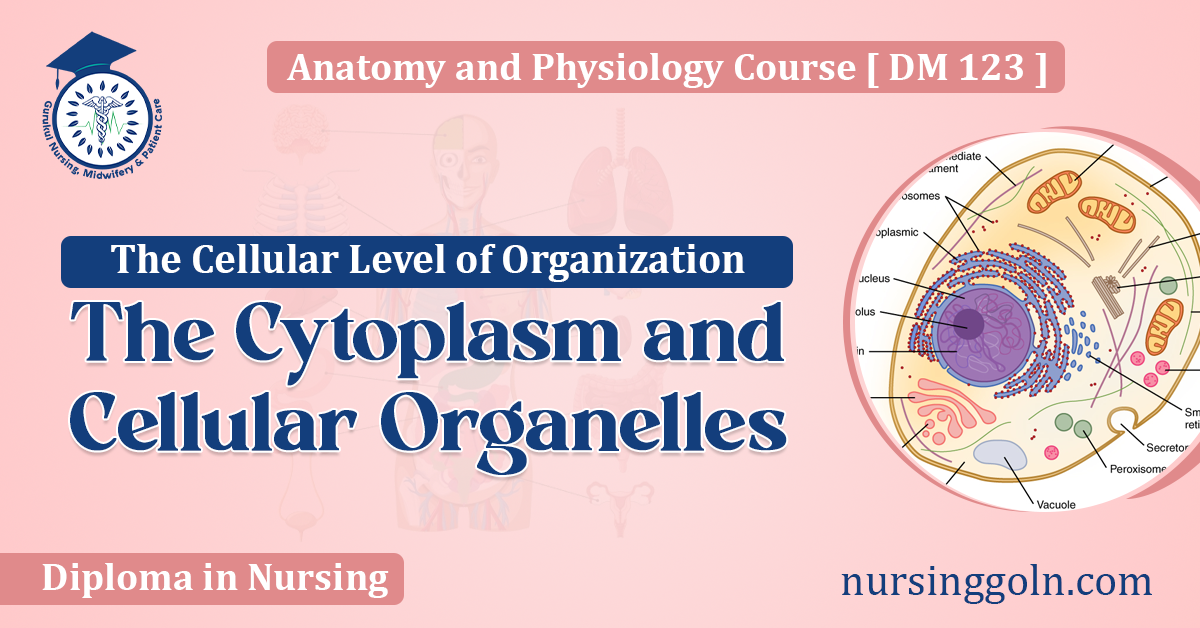The cell is often referred to as the basic unit of life. Each cell, though microscopic in size, contains an incredibly complex environment that supports the life of the organism. This environment, made up of a semi-fluid substance called cytoplasm and various cellular organelles, plays a crucial role in maintaining the functionality of the cell and consequently, the entire organism. This article delves deep into the world of the cytoplasm and cellular organelles, illuminating their crucial role in the cellular level of organization.
Cytoplasm: The Cellular Matrix
Before diving into the array of specialized organelles, it’s important to first understand the nature of the substance they are suspended in – the cytoplasm. Derived from the Greek words ‘cyto’ (cell) and ‘plasm’ (formed or molded), cytoplasm is the cellular matrix in which the organelles reside.
Composition and Function of Cytoplasm:
The cytoplasm is primarily composed of water, salts, and various organic molecules. The consistency of the cytoplasm can range from a gel-like state to a more liquid consistency, depending on the cell type and its activity.
The cytoplasm serves several essential functions:
- Medium for Metabolic Reactions: Many cellular metabolic reactions occur in the cytoplasm. Enzymes present in the cytoplasm catalyze these reactions, enabling the synthesis or breakdown of molecules necessary for the cell’s functions.
- Physical Support: It provides a supportive matrix for the organelles, helping maintain cellular shape and consistency.
- Storage: The cytoplasm also acts as a storage medium for nutrients and waste products.
The Cellular Organelles
1. Nucleus: The Control Center
At the core of the cell lies the nucleus, which is often considered the cell’s command center. The nucleus contains the cell’s DNA, a molecule that holds the genetic instructions necessary for building and maintaining the organism.
Features of the nucleus include:
- Nuclear Envelope: A double membrane that surrounds the nucleus and separates it from the cytoplasm.
- Nucleoplasm: The semi-fluid substance within the nucleus.
- Nucleolus: A small, dense region within the nucleus where ribosome assembly begins.
- Chromosomes: Thread-like structures composed of DNA and protein that contain the cell’s genetic information.
2. Mitochondria: The Powerhouse
Mitochondria are often referred to as the cell’s powerhouses. They generate most of the cell’s energy in the form of adenosine triphosphate (ATP). Remarkably, mitochondria have their own DNA and reproduce independently of the cell in which they reside.
3. Endoplasmic Reticulum (ER): The Cellular Factory
The ER is a network of membrane-bound tubes and sacs. Its primary function is to produce, process, and transport proteins and lipids for the cell. There are two types of ER:
- Rough ER: Studded with ribosomes and plays a significant role in protein synthesis and modification.
- Smooth ER: Lacks ribosomes and is involved in lipid synthesis and detoxification processes.
4. Golgi Apparatus: The Shipping and Packaging Center
The Golgi apparatus modifies, sorts, and packages proteins and lipids for transport. It’s structured as a series of stacked, flattened sacs. Proteins and lipids synthesized in the ER are sent to the Golgi apparatus for further modification and distribution.
5. Lysosomes: The Digestive Units
Lysosomes are small, spherical organelles that contain digestive enzymes. They break down waste materials and cellular debris, playing a pivotal role in cellular homeostasis.
6. Peroxisomes: The Detox Units
Peroxisomes are small, round organelles that contain enzymes responsible for detoxifying harmful substances and breaking down fatty acids.
7. Ribosomes: The Protein Factories
Ribosomes, composed of RNA and protein, are the sites of protein synthesis. They can be found floating freely in the cytoplasm or attached to the rough ER.
8. Cytoskeleton: The Cell’s Scaffold
The cytoskeleton is a complex network of protein filaments and tubules that gives the cell its shape, offers support, and facilitates movement. It’s composed of microtubules, actin filaments, and intermediate filaments.
9. Centrosomes and Centrioles: The Cellular Organizers
These are essential for cell division. Centrosomes are regions of the cytoplasm containing centrioles, which help organize the assembly of microtubules.
10. Vacuoles and Vesicles: Storage and Transport
Vacuoles are large, fluid-filled organelles that store materials such as water, nutrients, or waste products. Vesicles are smaller and aid in transporting substances within the cell.

11. Chloroplasts (in Plant Cells): The Photosynthetic Units
Found in plant cells, chloroplasts are the sites of photosynthesis, where light energy is converted into chemical energy in the form of glucose.
Conclusion
The intricate dance of the cytoplasm and cellular organelles allows for the myriad of processes necessary for life to continue at the cellular level. From the synthesis of vital proteins in the ribosomes to the energy production in the mitochondria, each component plays an integral role in maintaining cellular health and function. The beauty of this cellular level of organization is that it reflects the broader principle seen in biology – the whole is greater than the sum of its parts. Just as individual cells come together to form tissues, organs, and ultimately organisms, the cytoplasm and its embedded organelles work synergistically to ensure the cell’s survival and success.
See more:
